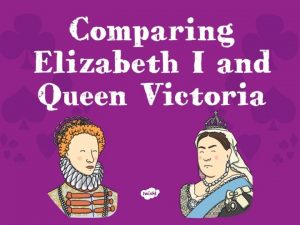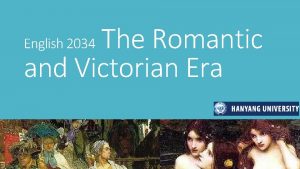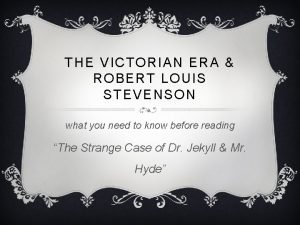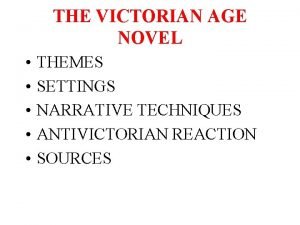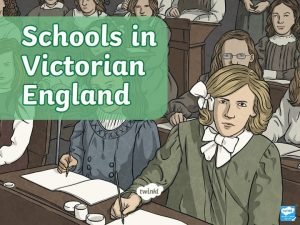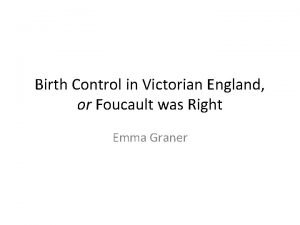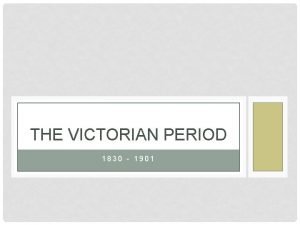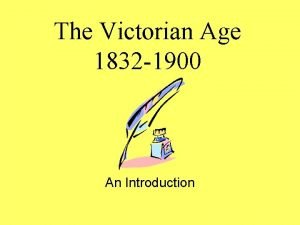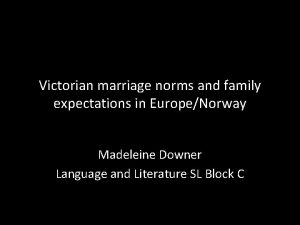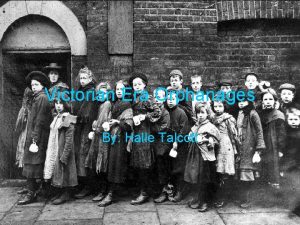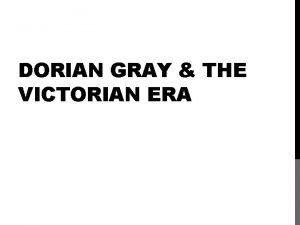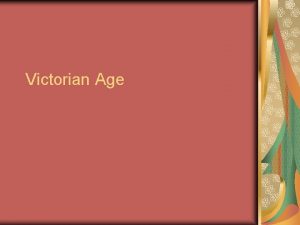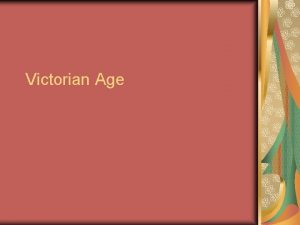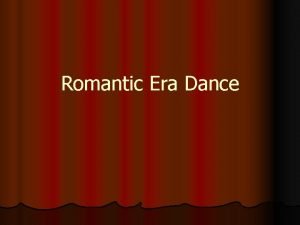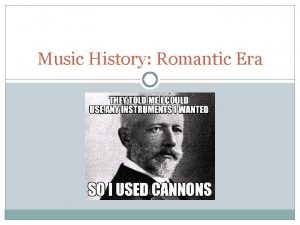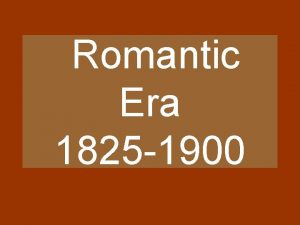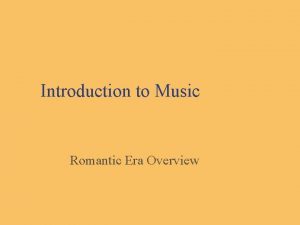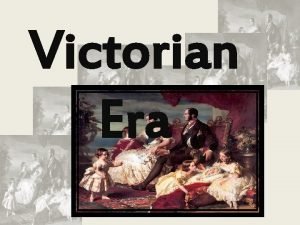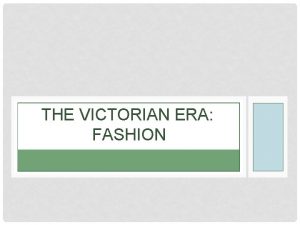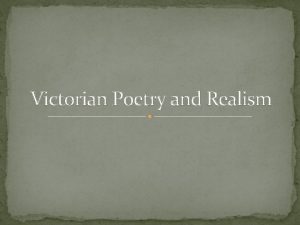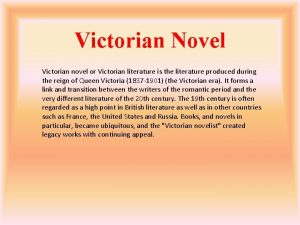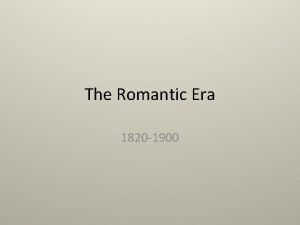The Romantic and Victorian Era English 2034 English


















- Slides: 18

The Romantic and Victorian Era English 2034

English Literature English literature begins with Germanic poems and stories, usually grim and warlike, but sometimes vulgar and funny. Post-conquest poetry, written in Middle English, becomes more concerned with French and Latin themes of love and romance. It reaches its height with Geoffrey Chaucer (1330 -1400).

Poetry Queen Elizabeth reigned 1558 -1603, but her period was so influential that the Elizabethan style of poetry extends into the mid-1600 s. Themes Love: Forbidden love, young love, poems of pleading Aristocratic and classical / heroic subjects Startling, extreme, or sexual comparisons or imagery

Historical Changes in England 1600 -1800 The development of wealth through capitalism, instead of land. The growth of trade brought new wealth and power into cities. Banking and corporations grew based on trade or finance. Royal courts fell in prestige when the real money was in the cities. The growth of international trade and colonization. Improved sea technology and better ships and navigation equipment allowed a huge expansion in markets and colonies as the European countries raced to claim lands in North and South America and Africa and Asia.

Historical Changes in England 1600 -1800 The growth of nationalism. The growth of fixed countries based on language or land boundaries, as opposed to identity based on ethnic or other markings, solidified Europe. This made early modern war unusually violent. However, nationalism also often coincided with state democracy and voting rights. Religious war. Combined with the growth in nationalism, this caused a long series of wars as countries sided into Protestant and Catholic factions. Fatigue from the conflicts was one element in the anti-religiosity of the secular French Revolution and the birth of Marxist socialism.

The “Enlightenment” of the 1700 s The Cynical Century. Perhaps in response to war, and because of the new interest in science, the 1700 s was a lean time for literature in England– journalism and essays were more popular. The century also saw new developments in secular, technological, and non-traditional arts such as economics. The Industrial Revolution.


Romanticism (1800 s) Romanticism is in some ways a rejection both of the coldness of enlightenment technology and the industrial revolution, and of the chaos of the French Revolution. In popular culture there is a new appreciation for nature, human emotions, and humanism. Although romanticism is not a religious movement, the period sees a religious revival.

Romanticism German painter Caspar David Friedrich: “the artist’s feeling is his law. ” English poet William Wordsworth: poetry should be “the spontaneous overflow of powerful feelings. ” Much of German Romanticism led to a reawakening of feelings of nationalism and emotional desires for recapturing a lost, primitive Germanic identity rooted in nature.

Clothing at 1800 Lace, powder, and wigs disappear from the wealthy, believed to be too close to the styles worn by the French aristocrats before the French revolution. A cultural shift to more individual and expressive clothing begins, with a new interest in following high fashion.

Victorian England 1837 -1901 Beloved Queen Victoria reigned over the height of the British Empire in the nineteenth century, when its huge wealth, trade, and industrial power ruled the world. Along with Elizabethan England, it was a sort of second golden age of English wealth, culture, arts, and literature.

Victorian England 1837 -1901 …Unless you were poor. As public farm lands were closed off and people came to cities to find industrial jobs, living standards for the poor involved dangerous and insecure work at low wages, dirt, and poverty.

Victorian Values: Respectability!

Or not… The Victorian era has a stereotype of being prudish and sexually repressed, so much so that “Victorian” is now used as an adjective for this meaning. In fact, religious ideals of family respectability coexisted with confident, adult themes in art, photography, and literature.

Pre. Raphaelites

Pre. Raphaelites

Pre. Raphaelites

 Roman floral arrangements
Roman floral arrangements Colonial williamsburg floral design time period
Colonial williamsburg floral design time period Cadastre 2034
Cadastre 2034 Jehovah's witnesses armageddon 2034
Jehovah's witnesses armageddon 2034 Elizabethan and victorian era
Elizabethan and victorian era Romanticism vs victorianism
Romanticism vs victorianism Robert louis stevenson victorian era
Robert louis stevenson victorian era The victorian novel schema
The victorian novel schema Education during the victorian era
Education during the victorian era Is the victorian era named after queen victoria
Is the victorian era named after queen victoria Victorian era birth control
Victorian era birth control Victorian period timeline
Victorian period timeline The victorian age summary
The victorian age summary Victorian quotes
Victorian quotes Victorian era literature characteristics
Victorian era literature characteristics Victorian era marriage expectations
Victorian era marriage expectations Victorian orphanages
Victorian orphanages Cars in the victorian era
Cars in the victorian era The picture of dorian gray victorian era
The picture of dorian gray victorian era




